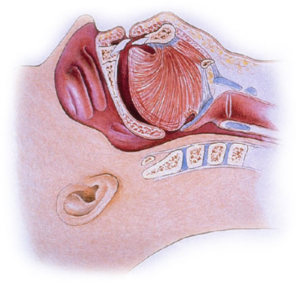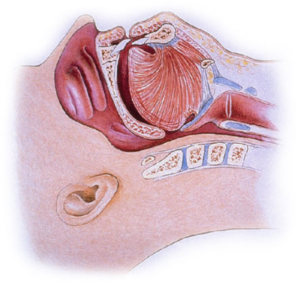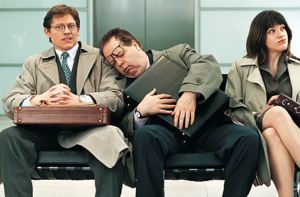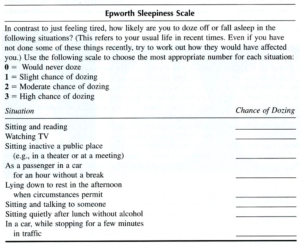
How Sound Is Your Sleep!
The World Health Organization (WHO) defined health in its broader sense in its 1948 constitution as “a state of complete physical, mental, and social well-being and not merely the absence of disease or infirmity.” To maintain this state Humans, like all animals including mammals, birds, reptiles, amphibians, and some fish, and, in some form, insects, need sleep, along with food, water and oxygen, to survive. An average human being spends almost one-third of their life asleep, and it is a vital process to maintain the internal environment of the body. It is evident from the fact that the lack of sleep with sleep debt or disturbance in normal biological clock of sleep called circadian rhythm leads onto social, mental and physical disabilities. It is why Dalai Lama said “Sleep is the best Meditation”.
Sleep needs vary across ages and are especially impacted by lifestyle and health. The sleep pattern is further disarranged with use of stimulants like coffee and energy drinks, alarm clocks, and external lights like use of mobiles, TVs; work pressure to achieve targets; and use of sedatives and alcohol. It is not only the Quantity of sleep but the Quality also which determines the health of a particular individual. Sleep disturbances are predictor of cause-specific work disability and delayed return to work.
The major common types of sleep disorders are Sleep Restriction/Deprivation, Insomnia, Shift work disorder, Circadian phase delay, Sleep Apneas (Obstructive and Central), some other sleep breathing disorders like Hypoventilation(decreased breathing), Restless leg syndrome and Narcolepsy.
Sleep deprivation is the commonest cause of sleep disturbance in general population. This can be because of various factors essentially being shift work, multiple jobs, social life, work performance pressure, and many others. Insomnia is the difficulty in initiating or maintaining sleep and waking up too early. It is associated with decreased daytime function. Work related issues are again the common cause including stress, shift work, jet lag and Medical Illness can be a cause too. Circadian phase delay is the disturbed sleep wake cycle according to day and night. It is commonly seen with delayed phase in young adults and phase advance in elderly. It is problem only when it interferes with normal daily activities.
Sleep apnea is the sleep disorder that involves cessation or significant decrease in the airflow during sleep. It is classified as Obstructive in the presence and Central in the absence of breathing effort. Obstructive sleep apnea or OSA is the most common type of sleep-disordered breathing and is characterized by recurrent episodes of upper airway collapse during sleep associated with recurrent fall in oxygen level in the blood leading onto arousals from sleep. The severity of OSA is calculated with the frequency of this cyclical airway collapse causing snoring and arousals during the sleep in one single particular night. The prevalence in US has been 2-4% for women and 4-9% for men and it remains undiagnosed in approximately 93% of affected women and 82% of affected men.
The cardinal symptoms of this disorder are loud, habitual Snoring many times bothersome to others; witnessed apneas (interrupt the snoring) which are more appreciated by bed partner; and Excessive Daytime Sleepiness which occurs despite regular, adequate sleep. Excessive daytime sleepiness in the beginning is with quiet activities like reading, watching television; and as the severity worsens, patients begin to feel sleepy during activities that generally require alertness like school, work, driving. It is the basis for assessment of the severity of sleep apnea with questionnaire called Epworth Sleepiness Scale. Other associated symptoms are Sleep fragmentation from frequent arousals (equivalent to sleep deprivation); Insomnia of sleep maintenance; unrefreshing sleep “waking up as tired as when they went to bed”; morning headaches along with tiredness, fatigue, and intellectual, memory and mood problems during the day.
The reasons for this disorder can be structural abnormality in face especially mandible (chin bone), tongue, Adenotonsillar hypertrophy (particularly in children and young adults), palate. The other factors causing this problem are Obesity, central fat distribution, alcohol and sedative use, smoking. Certain medical conditions too can lead onto features of OSA including Hypothyroidism, Acromegaly and Neurologic syndromes like postpolio syndrome, muscular dystrophies & Stroke. Obesity is found to be associated in more than 60% patients in one major study. Increased parapharyngeal fat deposition in obesity leads to smaller upper airway and increased collapsibility of the pharyngeal airway. The collar size equivalent to neck circumference of > 17” males and > 16” females is found to be the risk factor.
OSA has both societal and physical heath impact. As cognitive and behavioural problems arises with this condition. There is increased risk for traffic and workplace accidents. The Automobile crash rate is six times than normal with alcohol & sleep restriction further worsening the situation. The increased occupational accidents with truck, taxi or bus drivers, railway engineers, airline pilots, air traffic controllers, aircraft mechanics, ship captains are well documented. Car drivers falling asleep driving and working with machinery or hazardous occupations are the source of severe morbidity and death.
The medical complications like increased insulin resistance and worsening diabetes control, hypertension, heart attacks, strokes are known to occur with OSA. OSA can lead to hypoxia (low oxygen levels), and repetitive changes in oxygen saturations stimulate a sympathetic response (“fight or flight response”, “stress” response) leading onto increased heart rate and blood pressure. Studies show that ~40% of people with OSA have high blood pressure while awake and 40-80% of people with non-controlled hypertension have OSA.
The management of sleep related disorders is very crucial. Primarily awareness of such kind of disorder has to be there. The initial assessment is from careful elaborate history including from bed partner. As discussed Epworth Sleepiness Scale is very handful for initial screening. Further diagnosis can be made by performing Sleep study called Polysomnography if indicated. The steps which can be taken to prevent sleep disturbances are to avoid use of alcohol, sedatives and stimulants before sleep; maintain sleep hygiene and perform mind relaxation techniques. If someone has very severe problem than medical help should be sought without delay.
As famous author Anthony Burgess said “Laugh and the world laughs with you, snore and you sleep alone.” Don’t let snoring or sleep related disorder ruin your mental, social and physical health. Sound sleep is necessary to rejuvenate the body as by Mahatma Gandhi “Each night, when I go to sleep, I die. And the next morning, when I wake up, I am reborn.”





With access to
24 Hour
Emergency
Assistance
Due to COVID19 a pandemic we are happy to serve you from the comfort of your home.
See your Doctor Face to Face on Online Video Doctor Consultation.


